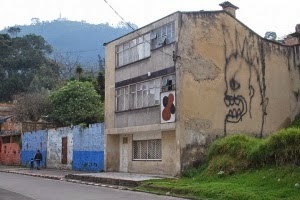In this oportunity im going to talk about the role of graffiti in Colombia, Argentina,Honduras and Brazil. In Colombia,Bogotá they reflect on the art of violence that occurred in a certain era in the city,but now is one of the most peaceful there wasn't much graffiti or street art to be seen on the streets; ten years later, the scene is thriving. "Sometimes the only way to get your message across is by throwing the paint on the wall, as shown by this monster in La Candelaria" Tom Feiling
In Honduras,Tegucigalpa is a very violent city, and they reflect that by grafiti "Every 87 minutes someone dies in Honduras from a firearm, and there are over 650,000 illegal weapons. This piece will speak to that," Maeztro tells Al Jazeera. Tegucigalpa has become one of the world's deadliest cities with more than 87 homicides per 100,000 people - 10 times the rate considered an epidemic of violence by the World Health Organisation. Many other graffiti displays are scattered all over Tegucigalpa, and not all are political. Maeztro's first series was a set of mixed paintings where he used internationally renowned works such as Leonardo Da Vinci's "Mona Lisa" and Grant Wood's "American Gothic" to capture pedestrians' attention. In Brazil Nunca and Os Gêmeos are among the most famous practitioners of Brazilian street art,they work is international and is influenced by corruption and political moviments in Brazil In Argentina,Buenos Aires Street art is usually associated with graffiti, but it is a different story in the Argentinian capital of Buenos Aires, where it is being elevated to a new level, turning the streets into an open air art gallery. In northen Africa nobody can hide from an opinion in graffiti, because is a type of foreing lenguage and tells histories that are untold.

Good summary with complete information
ResponderEliminari agree with you